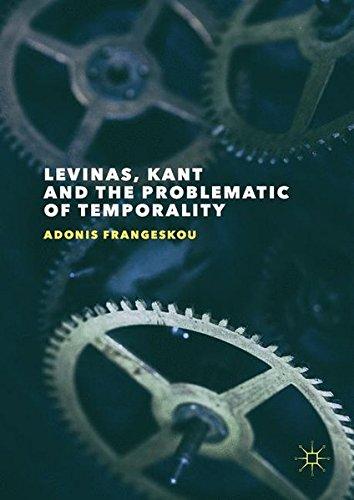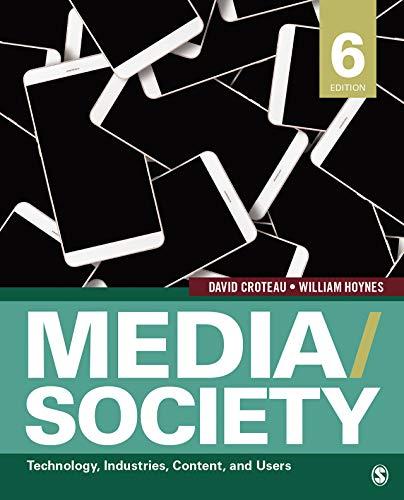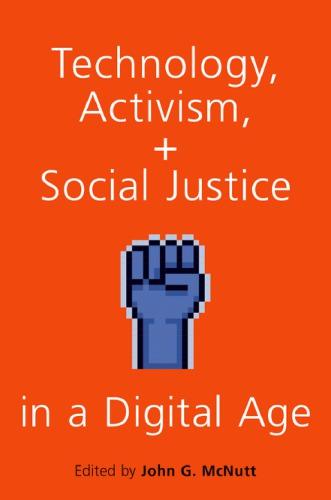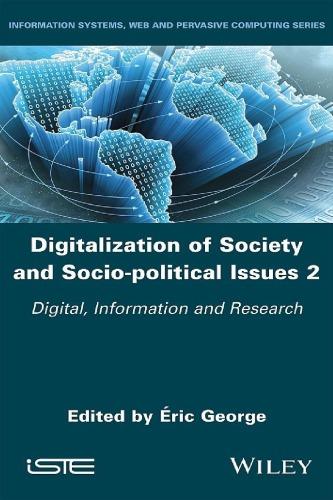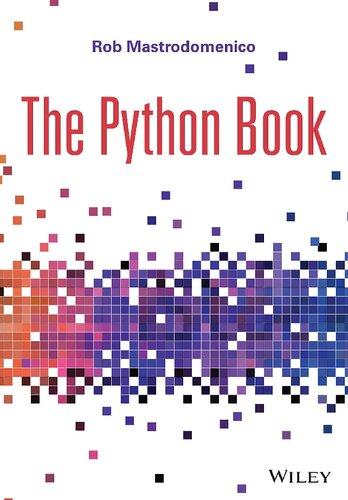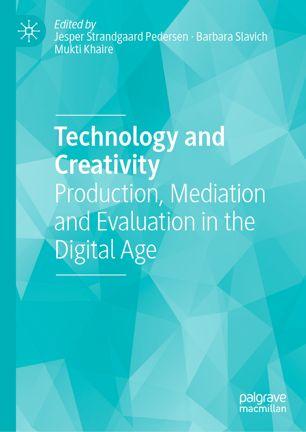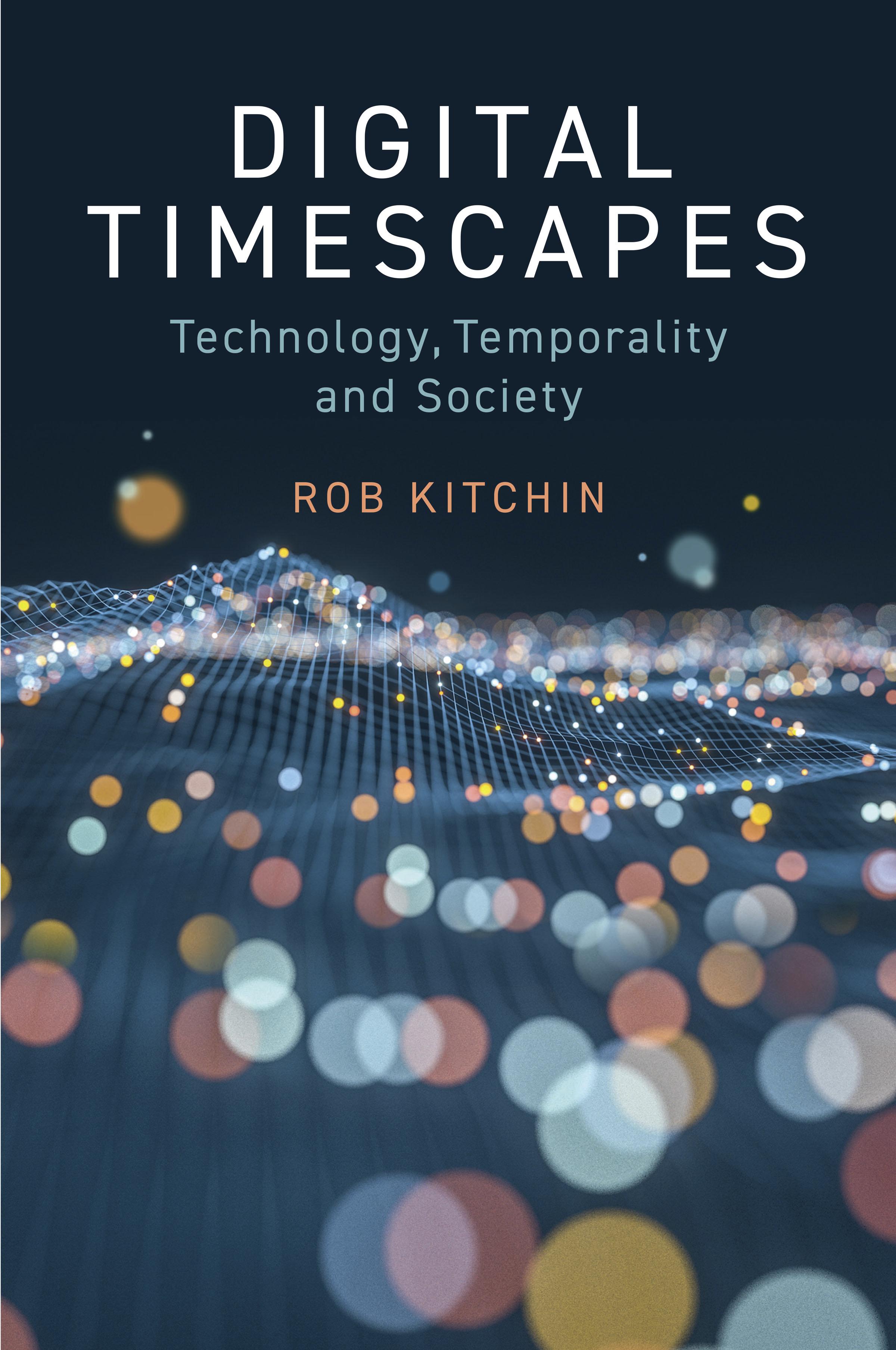TIME, TEMPORALITY AND TIMESCAPES
The key contention of Digital Timescapes is that digital technologies, in a range of guises (as devices, systems, platforms and infrastructures), have profoundly transformed the temporalities of social and economic life, as well as our contemporary conception of time. How time is understood and experienced is different from thirty years ago and the tail end of the dominance of clock time. We now expect to be able to: instantly source a vast array of information and services at any time, from anywhere and on the move; interleave and timeshift activities into ‘dead time’, such as performing networked labour while waiting at a bus-stop; binge watch a television series made and broadcast in a different jurisdiction on our own schedule and at a playback speed of our choosing; communicate and interact in synchronous and asynchronous ways with a diverse network of social contacts spread across the globe; browse and compare goods, buy them with the click of a button and have them delivered within hours; alter meet-ups and travel plans on the fly in relation to unfolding circumstances; access news occurring anywhere on the planet as it happens; and perform work in more temporally flexible ways. These tasks were largely impossible until recently. Now they are all taken for granted and routine for a large proportion of the population, particularly in the Global North. Just as there was a shift from a task orientation to time to a clock orientation during modernity, over the last three decades there has been a shift to a network orientation to time. Prior to examining this contention in depth in subsequent chapters, it is important to set out the conceptual understanding of time adopted and explicated throughout the book. This is necessary in order to frame and situate the subsequent analysis, as the nature of time cannot be taken as given. This chapter, then, details a
contingent, relational, heterogeneous understanding of time; introduces the notion of timescapes; and outlines four cautionary issues to keep in mind when assessing the relationship between technologies, temporalities and everyday life.
The social production of temporality
Philosophers and other scholars have long mused on the nature of time, with a number of conceptual positions elaborated (see Adam, 1990; Burges and Elias, 2016). For some, time is abstract, absolute and essential in nature, best understood through physical laws as inviolate and linear, the irreversible passage from the past to the future that unfolds independently of human existence. Such a view understands time as universal and objective, a phenomenon that can be measured quantitatively and expressed as clock time, and is evident in the cycles of seasons and life and death (Kern, 1983). For others, time is not simply given – a fundamental dimension within which we exist – but is actively produced. Time is contingent, relational and heterogeneous (Adam, 1990). It is perceived, experienced and social. This notion of time is often referred to as temporality, which Hoy (2009: xiii) defines as ‘time insofar as it manifests itself in human existence’. Temporality denotes the diverse set of temporal relations, processes and forms that are enacted and experienced through individual and collective action. Temporalities are embodied, emplaced, materialized and experiential (Grant et al., 2015); they are time performed through individual agency, entangled with the temporalities of others, and structured through institutional arrangements and mediating technologies and systems (Sharma, 2014). Temporalities are experienced as a complex entangling of past, present and future, rather than as time’s arrow.
That temporality is plural and heterogeneous is well established within the social sciences literature (Adam, 2004). Rather than time being abstract, universal and homogeneous, it is understood as being produced, articulated and experienced in multiple ways. Temporal relations are diverse, non-linear and multifaceted, with people navigating and producing many temporalities simultaneously (West-Pavlov, 2013). For example, Burges and Elias (2016) identify three forms of temporality: time as history (how time is periodized and the relationship between past, present and future); time as calculation (how time is measured and used to structure activity); and time as culture (how time is mediated, embodied, placed and experienced).
time, temporality and timescapes
Each orientates time with respect to a particular framing. Similarly, Leong et al. (2009) identify a tripartite conceptualization of temporality that mirrors Lefebvre’s (1991) three forms of spatiality: conceived time (the formal structures and technologies, such as timetables and clocks, that represent and organize time), perceived time (how time is understood and experienced), and lived time (the everyday social practices that enact temporalities) (Humphreys, 2020). These three forms of time collide and work together to produce complex temporalities that vary with context. Peter Osborne (2013: 17) thus writes that the present is not simply experienced ‘in’ time, but consists of a coming together ‘of’ times – what he terms ‘a disjunctive unity of present times’ (cited in Burges and Elias, 2016). These present times unfold dynamically, fluctuating in pace, tempo, rhythm, duration and continuity, ‘some long run, some short term, some frequent, some rare, some collective, some personal, some large-scale, some hardly noticed’ (Crang, 2001: 190).
The multiplicity of time is made clear when one maps out the diverse set of temporal rhythms, cycles, relations and modalities in which we are enmeshed daily (see table 1.1). We are accustomed to dealing with temporalities ‘organized around the individual, family, community, fiscal unit, or legislative entity’ and denoted in ‘biological (menstrual cycle, lifetime), chronometric (second, hour), calendrical (day, decade), historical (election cycles, technological development), or economic (business cycles)’ terms (Houser, 2016: 145). We make and save time, utilize and waste it, use it as reward (holidays) and punishment (serving time) (Hassan, 2009). People enact, and are ensnared within, many intersecting temporal relations that shape the perception and experience of time, and influence how social and economic systems work. Practices and processes unfold at varying paces and tempos; they are diversely coordinated and sequenced; and they produce numerous efficiency and productivity effects. Likewise, everyday life unfolds within and through polymorphic and concatenated temporal rhythms and cycles that produce a sense of continuity, stability or disjuncture. Lefebvre (2004) identifies two main types of temporal rhythms. Linear repetitions are ‘imposed structures’ enacted through social practices, such as clock time and timetables, whereas cyclical repetitions are ‘lived time’ originating in ‘nature: days, nights, seasons’ (Lefebvre, 2004: 8). Individuals commonly encounter and co-produce several rhythms simultaneously. In some cases, rhythms can be eurhythmic, being harmonious and stable though not necessarily in-sync, or isorhythmic, being equal and synchronized, or arrhythmic, being out-of-sync and disruptive (Conlon, 2010).
Table 1.1 Multiple forms of temporality
Temporal rhythms/ cycles and measured time
Natural Earth seasons; diurnal cycles; body clocks; turning of tides; environmental processes
Social and economic National holidays; celebrations; festivals; holy days; working hours; time rules; rush hour; family mealtimes; business cycles; policy cycles; boom-and-bust cycles
Technical
Product lifecycle; updating; planned obsolescence; phasing; dereliction and ruin; machine time
Clock/measured time
Second; minute; day; week; month; year; decade; century; millennia; 24/7; standardized time
Temporal relations Pace and tempo Speed; acceleration; refrain; rate; repetition; duration; immediacy; ahead/behind the curve; deceleration; stasis/inertia; hesitation; time flies/drags
Scheduling Coordination; sequence; phasing; prioritization; continuity; frequency; routine and habit; just-in-time; on-the-fly; peak time; timetables; deadlines; temporal density and fragmentation
Efficiency Productivity; punctuality; simultaneity; rapid response; fast-tracking; leap-frogging; latency; delay; synchronization; multitasking; time shifting; optimization; flexibility; temporal arbitrage
Time-space compression
Time-space convergence and distanciation; global present; network time; instantaneous time; timeless time
Temporal modalities Past present History; memory; memorialization; heritage; preservation; evolution/ change; trend; legacy; path dependency; forgetting; hindcasting
Present present Event; prehension; real-time; of-the-moment; serendipity; always-on; prototyping; liminality; mediated time; nowcasting
Present future Pre-emption; trends; short/ mid/long term; projection; speculation; promissory; prediction; simulation; prophecy; premediation; forecasting
Future present Aspiration; anticipation; preparedness; foresight; scenarios; long-term; backcasting
Source: created by the author; re-organized and extended from Kitchin (2019a).
Moreover, while the past, present and future act as a chronology against which temporality can be registered – before, now and after – in lived practice they are reciprocally entangled, ‘folded into each other in qualitatively different ways’ (Koselleck, 2004: 242), rather than being distinct, independent, sequenced categories. The present is an extension built on both the past and an anticipated future. Remembering an event, such as climbing a mountain as a child, entwines past and present, and anticipating its repetition enmeshes the future (Brockmeier, 2002). Similarly, when redeveloping a historic marketplace, replacing it with a shopping mall and apartments, the nostalgia and memories of the past, previous failed proposals, present conditions and activities, and future ambitions become interwoven in public debates and decision-making (Moore-Cherry and Bonnin, 2020). In governance practices, the past and future are produced in the present through algorithmic systems – for example, migration movements across the Mediterranean are simultaneously monitored and tracked in real-time, archived in databases to create a past record, and modelled for future-orientated risk (Tazzioli, 2018). The homepage of an online newspaper has a mixed sense of liveness, blending real-time news with rapidly dating archived stories and the premediation of potential future scenarios, which could all relate to the same unfolding event (Ekström, 2016). In routing and locationbased apps, archived data concerning past events guide the present by anticipating and pre-empting potential futures (Thatcher, 2013). This collapsing and enmeshing of past-present-future is common in emergency management, designed to manage immediate risk and pre-empt new events (see chapter 5). This entanglement is captured in Adam and Groves’ (2007) use of ‘past present’, ‘present present’, ‘present future’ (the future projected forward from the present) and ‘future present’ (an anticipated future backcast and imagined in the present), which fuse the terms together, with the present the common denominator ‘because experientially, the past, present and future do not have an existence outside of the present’ (Dodgshon, 2008: 7). The heterogeneous nature of time, and the entanglement of past, present and future, are evident in the use of diverse temporalities in fiction, television and film, where time is used to structure narratives and also as plot devices (e.g., flashbacks, replays and recaps; slow motion and fast forwarding; time jumps, time loops and time travel; premonitions). Particular genres are often characterized by their temporal logics, such as the narrative time of soap operas, the real-time of reality shows, and the fragmented and inventive time of science fiction (Keightley, 2012). Similarly, as Kuhn (2010: 299)
notes, memories in written texts are ‘typically a montage of vignettes, anecdotes, fragments, “snapshots” and flashes’, so that ‘time rarely comes across as continuous or sequential’. Likewise, video games have temporal continuities and discontinuities: ‘game time can be paused, re-loaded, restarted, recorded, connected to others on-line in different time zones’ (Reading, 2012: 145).
We are used, then, to encountering ‘many forms of time superimposed one upon the other’ (Koselleck, 2004: 2), composing what Burges and Elias (2016: 4) term ‘coetaneous temporalities’, and Tazzioli (2018: 272) ‘coeval temporalities’. We regularly find ourselves enmeshed in several temporalities simultaneously, which may be stretched out across scales and space (Hassan, 2003). For example, a person heading to a 10 a.m. meeting and using their mobile phone to talk to a colleague on the other side of the planet while waiting at a pedestrian crossing for the network-controlled traffic lights to change is negotiating global time and local time, clock time and network time, as well as social and natural time. She is experiencing the pronounced time-space distanciation of a long-distance call (see chapter 2), as well as the localized time-space choreographies of navigating an intersection that is mediated by the algorhythms of an intelligent transport system (see chapter 6). Yet the pace, tempo and rhythms of action unfolding in a real-time present are reliant on the stability, fixity and stasis of telecommunications and transport infrastructures, which evolve gradually or in periodic leaps (Starosielski, 2021). On a daily basis, then, we negotiate complex temporal landscapes with varying temporal relations and modalities. These temporal landscapes often constitute ‘chronotopes’, wherein the mutual inter-dependencies of time and space produce a signature unfolding of place (Crang, 2007: 70).
Chronotopes vary between locales depending on cultures and traditions, historical and contemporary political economies, institutionalized temporal regimes, and globalized inter-connections and interdependencies. For example, Spain has a tradition of siestas and, along with France and Italy, has more leisurely mealtimes, resulting in differing daily rhythms from Northern European countries (Lefebvre, 2004). The institutionalized work pattern of ‘996’ (9 a.m. – 9 p.m., six days a week) in many companies in contemporary China, and its effects on family and leisure time and local food economies (creating a mass demand for meal delivery), is quite different from that of Europe (Shin et al., 2020). As Barak (2013) has detailed for colonial Egypt, and Datta (2018) for present-day India, sacred, modern and (post)colonial temporalities coexist, inflecting each other to produce
time, temporality and timescapes
a plural, hybrid temporal landscape that differs from metropolitan Europe or North America, while simultaneously being partially organized to align with metropolitan time. For example, a significant part of the Bangalore economy functions during the night to align with Western customers and clients (Nadeem, 2009). At a local level, temporalities vary across and within neighbourhoods (e.g., city centre, suburbs, slums) and households (e.g., single, family, empty nesters). In other words, places do not possess a singular temporality, but are composed of multiple colliding, unfolding temporalities that stretch from the local to the global (Crang, 2007). It is little wonder, then, that so many forms of time are identified within time-centred studies: cosmological time, sacred time, mythological time, profane time, clock time, real-time, machine time, network time, mobile time, postcolonial time, patriarchal time, mediated time, geological time, spectral time, quality time, public time, historical time, along with many others.
The production of time
Given that the nature and experience of temporalities are multiple, dynamic and heterogeneous, it follows that they are produced rather than given (May and Thrift, 2001). Time is not an empty, abstract dimension through which we pass. Rather, we create temporalities within social context through a variety of processes and systems, many of which are technologically mediated by devices (such as clocks and timetables), and institutionalized within social structures (such as households, work, governance, religion). Time, as we perceive, generate and experience it, is eventful. Temporalities unfold in contingent, relational, contextual ways, ‘coloured and contoured, given shape, diversity, variation and substance through their unique circumstance of creation’ (Hassan, 2009: 50). Temporal regimes are (re)produced through social practices that have a temporality (e.g., pace, tempo, rhythm, sequence) and generate temporality (Shove et al., 2009).
An eventful notion of time
In an eventful, processual notion of time, temporalities are always in a process of becoming or unfolding. The countless happenings and encounters in which people take part generate, and are conditioned by, multiple, colliding, intersecting temporalities (Crang, 2005;
Sewell, 2005). The unfolding of temporalities is not predetermined, but is subject to emergence and critical junctures (Grzymala-Busse, 2011). In many cases, unfolding temporalities reproduce predominant temporal patterns and orders, or follow the trajectory of a path dependency (Sewell, 2005). Their constituent practices can be routine and (un)conscious habits that maintain the daily rhythms and sequences of everyday life – waking to an alarm, breakfast time, commuting during rush hour, working 9-to-5, evening mealtime, primetime television, going to bed. Moreover, many are enjoined, following an expected sequence – in a religious ceremony, the leaders and congregation are enjoined to perform rituals in a set pattern that have normalized timings and rhythms; enacting labour involves the enjoining of tasks in a performative order that ensures a job is fulfilled (Schatzki, 2009). Indeed, despite the emergent nature of temporality, it is not in permanent, divergent flux, having durable regularities that create hegemonic, normative time.
Nonetheless, these routines may subtly transform the temporal order through gradual, imperceptible shifts in practices (Anderson, 2015). In other words, the refrain of temporal rhythms is constantly articulated anew through citational repetition, but these mutate through imperfections and interventions (Edensor, 2010). While a system might strive to maintain a eurhythmic state, it is always unfolding in a slightly altered form, or it might be ‘punctured, disrupted or curtailed by moments and periods of arrhythmia’ and dissolve into noise (Edensor and Holloway, 2008: 485). Planned interventions, such as new policy and regulation, or unexpected or unpredictable incidents, such as emergencies, rupture the temporal order, with critical junctures creating new trajectories (Sewell, 2005). Moreover, happenings are nested, with sub-events taking place within larger events that may have differing durations, speeds, tempo, timings, sequencing and effects (Grzymala-Busse, 2011). For example, the temporal regime of communism in Eastern Europe was transformed in the early 1990s by a range of localized transitions taking place within wider national and regional transformations to a democratic, post-socialist, market-based regime (Goodin, 1998). Some of these transition events were rapid, shock ruptures; others unfolded more gradually. Likewise, work practices may be nested within activities that have differing temporal horizons – an immediate task, a larger job order, an emerging crisis, a yearly target, a mediumterm strategy, a long-term economic cycle (Sewell, 2005).
While there is a certain degree of agency in the performance and unfolding of temporalities, they are inflected and structured in a
time, temporality and timescapes
number of ways: contextually, socially and institutionally. The unfolding of events through temporal practices and the reproduction of temporal regimes are contingent on the context in which they take place (Adam, 1990). Exogenous factors, which are external to the systems in which practices are enacted, along with endogenous factors, are at work (Shove et al., 2009). Differing cultures, historical precedents, political-economic situations and local conditions create divergent conventions and expectations (Sewell, 2005). Pressures due to varying circumstances, such as a rush to meet a deadline, create differing conditions and experiences from a leisurely performance. The availability of certain technologies shapes how practices are performed, and their efficiency. Delays might be created by a lack of required technical or embodied knowledge to accomplish a task. Consequently, the weaving together of the temporal texture of daily life never reproduces the exact same pattern, and is always open to tears and breaks (Shove et al., 2009).
While individuals can shape the production of temporalities, they are generally a collective manufacture. We share tasks and environments. We negotiate, coordinate and synchronize schedules, and work to shared deadlines (Southerton, 2006). We align pace and tempo, and collectively produce rhythms. In her analysis of the temporal landscape of an intersection in Shibuya, Tokyo, Sharma (2014) details how multiple interdependent and relational temporalities are tangled together. The time-spaces of those shopping, working, playing and passing through the crossing are intertwined, if only in fleeting, direct and indirect, ways. The masses of people converging and navigating the intersection are temporally ordered, in part through the design of the space and its regulation through traffic lights, but also through social conventions and patterns of commuting, consumption and servicing (Sharma, 2014). Living in the same household similarly involves producing shared temporalities around activities such as mealtimes, domestic work, childcare and leisure. Our personal temporalities, then, are just one part of a complex hybrid temporal landscape, and we are always in the process of maintaining or transitioning shared temporalities (West-Pavlov, 2013).
(Re)producing temporal power
This collective manufacture of temporalities ‘is composed of a chronography of power’, with individuals having differing abilities and
opportunities to influence the unfolding temporal order (Sharma, 2014: 9). Drawing on Doreen Massey’s (1993) concept of powergeometry to highlight the unevenness in the production of space, Sharma (2014) forwards the notion of power-chronology to capture the differentiated production and experience of temporal power. She notes that there is a marked imbalance in the relative powerchronography and time sovereignty (ability to control temporal relations) of parents and children, and bosses and workers, in deciding on schedules, pace and tempo, and setting time rules and targets (such as timetables and deadlines) (Sharma, 2014). Women are highly familiar with the operations of power-chronology and the temporal orders of patriarchal time: of domestic and familial time in constant tension with public and capitalist time; of the double shift for working mothers and the sacrifice of leisure time; and of the dangers of night-time (Milojevic, 2008). The working class and people of colour are used to: externally imposed time orders, temporal surveillance and penalties, temporal arbitrage and precarity; working unpopular hours and long commutes; of being behind the curve and late to the newest innovations; of the feeling that time is not theirs to control (Sharma, 2014; Anderson et al., 2020). Likewise, within colonized states, the indigenous population were/are socialized and disciplined into the temporal regime of the colonizer, with the legacy of this regime continuing in a postcolonial era (Datta, 2018). In other words, the control of temporalities is a means through which social divisions relating to class, gender, race, ethnicity, age and other markers of social difference are maintained (see chapter 9).
The differences in power-chronology between groups has remarkable durability, persisting as hegemonic time because their logics are deeply embedded into social relations through institutionalized time rules and policies, social norms and expectations, and the workings and logics of political economies. In many cases, forms of temporal arbitrage operate, where the temporalities of one set of people are organized around those of others (Sharma, 2014). For example, many workers in the Global South align their working hours and body clocks with the schedules of customers in the Global North (Nadeem, 2009; see chapter 8). The daily temporal regime of taxi drivers flexes around the time schedules, pressures and demands of their customers (Sharma, 2014). Similarly, food delivery workers continuously rush to meet customer and company expectations for on-time delivery, in some cases losing pay for lateness (Chen and Sun, 2020). Here, deadlines are simultaneously an objective and a means of supervising and disciplining labour (Barak, 2013). In other words,
time, temporality and timescapes
temporality is a structuring relation of power, used to reproduce and exploit further uneven and unequal social relations and produce a sense of time shaped by and enacted through forms of temporal discipline and control (May and Thrift, 2001; Sharma, 2017).
Temporal power is formally institutionalized in the temporal organization, expectations and rules of state bodies, companies, and civic organizations, framed by and reproducing a wider political economy. Indeed, the control of temporality has been important in the imposition and workings of modernity, colonialism, capitalism and communism. Consequently, portions of daily life are ordered around formalized timetables: work and school hours, opening times, break periods, transport schedules and public holidays. Interactions with the state and law are ordered via appointments and deadlines. State bodies track key dates – such as births, deaths and marriages –and judge eligibility for services based on age and length of service. They can introduce policies and regulations concerning working times, operating hours, periods in elected office or serving on state boards, and curfews in times of emergency (Radoccia, 2013). Companies aim to create efficiencies and productivity through time rules and management practices relating to work pace, rates, coordination, synchronization, scheduling, deadlines and delivery times. In these cases, power can be direct and strategic, creating highly structured temporal relations, or operate more indirectly as a form of ‘soft conditioning’ designed to coerce or manipulate compliance with temporal regimes (Markham, 2020).
Temporal power is also embedded into technologies and technical systems, expressed through what Mackenzie (2006) terms ‘secondary agency’. Wajcman (2018, 2019), for example, demonstrates how ongoing developments in scheduling and time management apps codify the values and lifestyles of their Silicon Valley creators, and reflect their desire to produce intelligent digital assistants that optimize productivity and minimize dead time (see chapter 8).
Operational systems such as traffic control have formalized rules regarding timing, phasing, offsetting, cycle lengths, prioritization and road speeds, depending on traffic conditions, direction and types of users (cars, trucks, buses, cyclists, pedestrians) (Coletta and Kitchin, 2017; see chapter 6). Archives are not a neutral, technical means of storing records and artefacts, but rather are social-technical systems created by actors with particular aims, who make choices about what are archived and the terms under which they can be accessed and used, and, in turn, what can be asserted about the past (Bowker, 2005; see chapter 3). In other words, time-mediated technologies
are themselves social constructs, invented and institutionalized as instrumental means to articulate and leverage time (Kern, 1983). Timetables and time rules are negotiated, and change; for example, standardized clock time took years to be adopted globally, memory apps evolve through multiple iterations, and so on (Jacobsen and Beer, 2021).
The institutionalization of time and encoding into technical systems normalizes and reproduces temporal power and relations and their differential effects (Sharma, 2014). At the same time, temporal power is also open to resistance, subversion and transgression and moves to claim and assert time sovereignty – that is, having control over one’s own time. At an individual level, people employ their own time tactics to challenge temporal relations and time rules (e.g., delaying, working slowly, ignoring schedules or deadlines, being late). Collectively, they can campaign for time policies or regulations (e.g., fixed working hours, holiday allocation, time-off for maternity/parental leave, the right to disconnect) and undertake their own initiatives, such as communitycreated counter-archives (Cifor et al., 2018; see chapter 10).
Experiential, embodied, subjective time
A major contribution of temporal theorists in the early twentieth century – such as Husserl, Bergson and Heidegger – was to advance an experiential and subjective view of time (Kern, 1983; Hoy, 2009). They argued that it was important to conceptualize and treat time as lived and subjective, rather than abstract and objective, because this is how time thoroughly infuses our sense of self and the production of social relations. We (re)produce temporalities: we perceive, experience and perform time; we possess a sophisticated sense of time consciousness, and our subjectivity is formed through the structures and structuring of temporalities, rather than within them (Nowotny, 1994). We connect temporal events through consciousness and memory (Madanipour, 2017). Time, then, is not something external to and imposed on us, but is also internalized. Time is something we embody in our rhythms of sleeping, waking and eating; the pace, tempo and synchronization of work and play; our social performances and gestures, and our recollections and re-enactments of memories (Nowotny, 1994). It inflects our emotions and view of the world.
As temporal subjects, we have both ‘an orientation to time’, and are ‘disciplined by time’ (Lash and Urry, 1994: 226). We are used to
time, temporality and timescapes
processing, living within, and co-producing multiple temporalities, and being entangled within temporal power. For the most part, we encounter these temporal logics and relations with barely a thought: they are everyday hegemonic temporalities we navigate regularly, and experience and perform unconsciously through habits and routines (Hassan, 2009). Indeed, our relations with time are largely normalized and we are well able to handle cognitively their various intertwining and discontinuities. From birth, we are socialized into the logics and patterns of temporalities such as sleep and mealtimes, the school timetable and the working week. We learn how to deal with time pressures and stresses, and to employ time tactics to produce alternative temporalities. We appreciate, at the subjective level, that how we perceive and experience temporalities varies with context, and across individuals and groups. Time ‘moves at multiple speeds, relative to lived situations, perceptual perspectives and affective immersions in environments’ (Grant et al., 2015: 7). The same event can seem slow or fast, or eurhythmic or arrhythmic, depending on the role and experience of the individuals attending. In an exam, time for the bored invigilator seems to pass slowly, whereas it zips by for the stressed student; one person stuck in traffic might revel in the break from work, whereas another is anxious at the prospect of being late. The perception and experience of temporal power are uneven in distribution and consequence, with cultural identities formed, in part, through socialization in, and repeated encounters with, oppressive temporal regimes. Lived time is gendered, classed and racialized, with the orientation to and consciousness of time, and experience and perception of temporalities, varying in quite distinct ways depending on social status. It is embodied in temporalized practices, such as rushing to meet deadlines or meet targets, juggling the scheduling of work, home and childcare, and waiting in queues and killing time due to under- or un-employment. The workings of powerchronology, then, produce markedly differing lived temporalities and time consciousness across individuals and social groups. In reshaping the timescapes of domains and sites, digital technologies remediate the unfolding of lived and subjective time, and their relation to our sense of self, and our emotional and physical well-being (Hassan, 2009; Wajcman, 2015). Understanding the relationship between time, technologies and social and economic relations thus requires more than identifying and detailing the processes through which time is produced. It also necessitates charting how these processes and their resultant temporalities are perceived and experienced, and their implications for individuals and communities.
Producing the past and future
As has already been intimated, the production of the past and future are also contingent, relational and multiple, rather than closed, given and fateful (Sewell, 2005; Beckert, 2016). Rather than the past –history, memory, heritage – being immutable, factual, objective records and accounts of what occurred, the past is understood to be a mutable, contested terrain (see chapter 3). History is cast as ‘the study of changes of things that change’ (Buthe, 2002) and its writing is socially constructed, produced and interpreted by its interlocutors based on records and memories that are themselves social constructions and partial (Sewell, 2005). History is a cultural mediation of the past, socially organized through interpretation and narrativization, and shaped by epistemology, moral and ideological positions, and the concerns of the present (Huyssen, 2003). States exercise their temporal power to organize the past and its telling through their curation of national archives and control of access to records, as well as their role in public memorialization and commemoration. The notion of memory captures some of the ambiguity, relationality and mutability of the past, given it is a remembered or re-presented past that is shaped by the context and circumstances of the event and its recollection, as well as who is remembering. Individuals can remember the same event in quite different ways, and its collective memory is filtered and rescripted through media and state discourses. History, memory and heritage are highly contested in places ravaged by colonialism and war, and in some cases are formally disputed through truth and reconciliation initiatives, such as in post-apartheid South Africa.
The future, too, is contingent and produced, rather than closed and fateful (Beckert, 2016). Legacies of the past and the trajectories of path dependencies undoubtedly create a certain degree of momentum and direction towards the future. Nonetheless, while the future is not random or disconnected from trajectories and prevailing structures, it is not simply a continuation of the present informed by the past. Legacies and trajectories can be interrupted and redirected, and chance and unpredictable events can occur. Indeed, there are many imaginaries and practices through which we seek to envisage and mould the future in ways that maintain, redirect or forge new paths: prognosis, pre-emption, projection, prediction, forecasting, backcasting, speculation, promissories, prophecy, scenarios, simulations, foresight studies, plans and blueprints, and premediation.
For example, states seek to colonize the future through forecasts, foresight studies and development plans in order to create a future in their making (Urry, 2016). Companies aim to realize their ambitions through marketing, investments and speculation. The media condition the public’s expectations of temporal orders and possible futures through premediation, discussing potential scenarios and outcomes and their likelihood and consequences (Keightley, 2012).
Futuring practices and imaginaries scope out possible (those that might be realized given available or sought-after knowledge), plausible (those that seem achievable given a present situation), probable (those that are likely given the present trajectory) and preferred (those that are desirable) futures (Amara, 1981, in Poli, 2015). They precondition our imaginaries of and aspirations for the future, and inform actions designed to realize them, such as deciding on life-path choices, making investments, producing innovations, formulating policy, implementing mitigation and prevention strategies, and enacting governance regimes such as predictive policing and emergency management. These actions do double work. On the one hand, they shape how the present is managed in order to realize particular futures – just as the present prefigures the future, the ‘future acts as a determining condition of the present’ (Uprichard, 2012: 110). On the other, they produce ‘latent futures’ (Adam and Groves, 2007) – futures in the making that are ‘on the way’ but have yet to become realized and visible (Poli, 2015). Realization of these latent futures is by no means guaranteed, in part because there is intense competition between individuals and social groups to create preferred futures.
From this contingent, relational perspective, the production of time is not, then, teleological in nature; that is, progressing in a fateful, purposeful, single direction from the past to the present and into the future, following a grand design or transhistorical processes that serve some higher end, purpose or goal (such as eschatological, sacred accounts of time, in which we are heading for the ultimate destiny of humankind, such as the Second Coming or Apocalypse; or Enlightenment notions of progress towards modernity; or capitalism’s march towards free markets or to revolution; Sewell, 2005). Temporalities can be organized to serve an ideological purpose, but there is nothing inevitable about how they are produced – the general arc of our past, present and future is not predetermined, and nor is the unfolding of specific events. In other words, there can be radical ruptures in what appear to be stable temporal regimes and how temporal relations are created, organized and institutionalized
in society. For example, the Industrial Revolution, capitalism, colonialism and modernity ruptured medieval temporalities centred on religion, seasonal and solar cycles, and task-based work (Kern, 1983). The central premise of subsequent chapters is that a similar set of temporal ruptures have taken place in the digital era.
Time and space
So far, time and temporality have been discussed with little reference to space and spatialities. As Massey (2005) notes, aspatial notions of time are commonplace; space is not acknowledged, or simply provides the backdrop for temporalized processes. Likewise, the production of space is often conceptualized with little attention to its entwining with temporality. Since the philosophical ruminations of Ancient Greece, the nature of time and space and their interrelation has been debated extensively (Crang, 2005). Throughout the Enlightenment, time and space were cast within the natural and social sciences as separate and irreducible to one another, ‘polarized components of a conceptual dualism’ (West-Pavlov, 2013: 7). From an abstract perspective, space is considered a three-dimensional container in which we exist, and time is the irreversible passage from the past to the future (Kern, 1983). From a lived, experiential perspective, space is related to being, stasis and the dimension in which life exists, and time is related to becoming, progress and the trajectory through life (May and Thrift, 2001). Time reveals ‘relations of succession or change’, whereas space concerns ‘relations of structure or organisation’ (Dodgshon, 1999: 610). Giving analytical precedence to one dimension or the other prioritizes an understanding of society in terms of how it has developed through time, or how it is organized and operates across space (Massey, 2005). Dodgshon (2008) refers to this analytic separation as spaceless time (in which temporalities are examined with no reference to space other than as backdrop) and timeless space (in which space is charted with no reference to temporality, other than as occurring at a point in time). For May and Thrift (2001), the prioritization of time produces an aspatial historicism, whereas a prioritization of space leads to an atemporal spatial imperialism.
In contrast, the relationship between time and space can be conceptualized in at least three other ways that recognize that everyday life always occurs in both time and space: separate but related (time and space); separate but interdependent (time-space or space-time); or
time, temporality and timescapes
dyadic, in which they are thoroughly fused (timespace or spacetime) (Dodgshon, 2008). Time and space being intimately connected, but not necessarily interdependent, is evident in time-geography. Developed by the geographer Torsten Hägerstrand (1967), timegeography initially treated space and time as an abstract, absolute four-dimensional container in which activity takes place. Given that the temporal and spatial dimensions are fixed, independent scales, time and space have no influence over each other; they merely provide an inert backdrop. In later iterations, time-geography casts space and time relationally, acting interdependently in shaping social action (Schwanen, 2007; Sui, 2012).
As interdependent dimensions, time and space are understood as being irreducible, yet they directly shape each other. Massey (2005: 55, 56), for example, argues ‘neither time nor space is reducible to the other; they are distinct. They are, however, co-implicated.... [There is a] mutual necessity of space and time. It is on both of them, necessarily together, that rests the liveliness of the world.’ Likewise, Parkes and Thrift (1975) contend that space is timed, and time is spaced. That is, the production of space is shaped by the temporalities of the processes involved (e.g., the use of timetables to order the operations of transport infrastructure; the use of futuring in developing urban plans), and the production of time is influenced by spatialities (e.g., the spatial structure of a city guiding scheduling, sequencing and timings of events and timetables). In time-space compression, time and space work interdependently, with a reduction in the time taken to traverse and communicate across space speeding up the flows of information and goods, making the world seem smaller and more interconnected (see chapter 2). Sui (2012) notes that the interdependence of space and time can take a number of forms given their multiplicity, including chronos and choros (clock time and geometric space), kairos and topos (social time and lived place), and chronos/ topos, and kairos/choros.
For some, time and space are seen as being two sides of the same coin: since everything happens at some time in some place, they are intimately conjoined and inseparable. In other words, it is impossible to separate time and space into interdependent components (time-space) or consider them as separate phenomenon that instigate discrete processes (time and space) (May and Thrift, 2001). Instead, time and space are a fused dyad; ‘a single mode of dimensionality’: time-space (May and Thrift, 2001; Malpas, 2015: 26). For Malpas, the happening of place is inherently a time-space, what he terms ‘topos’; a temporal/spatial unity cast through mutual dependence.

